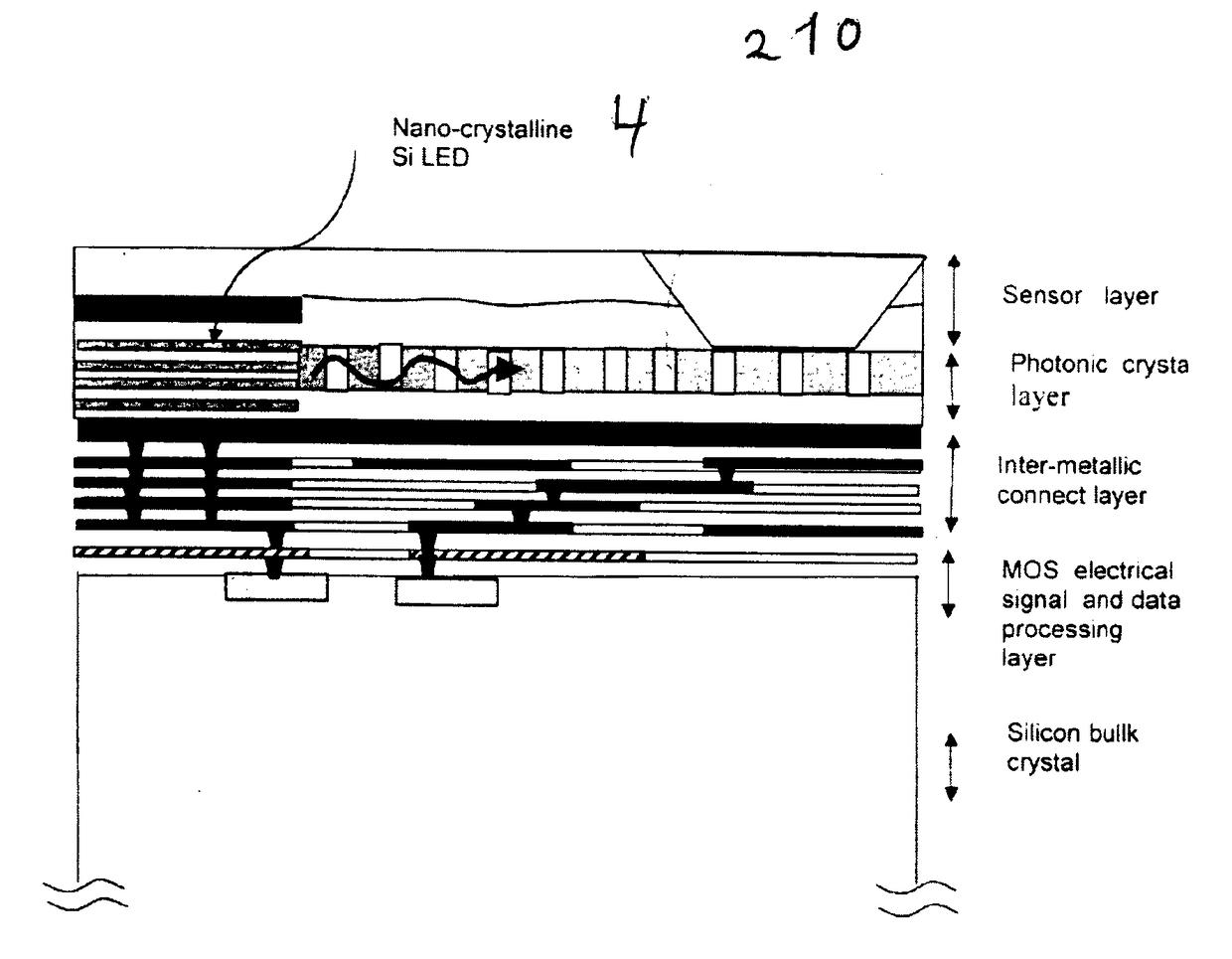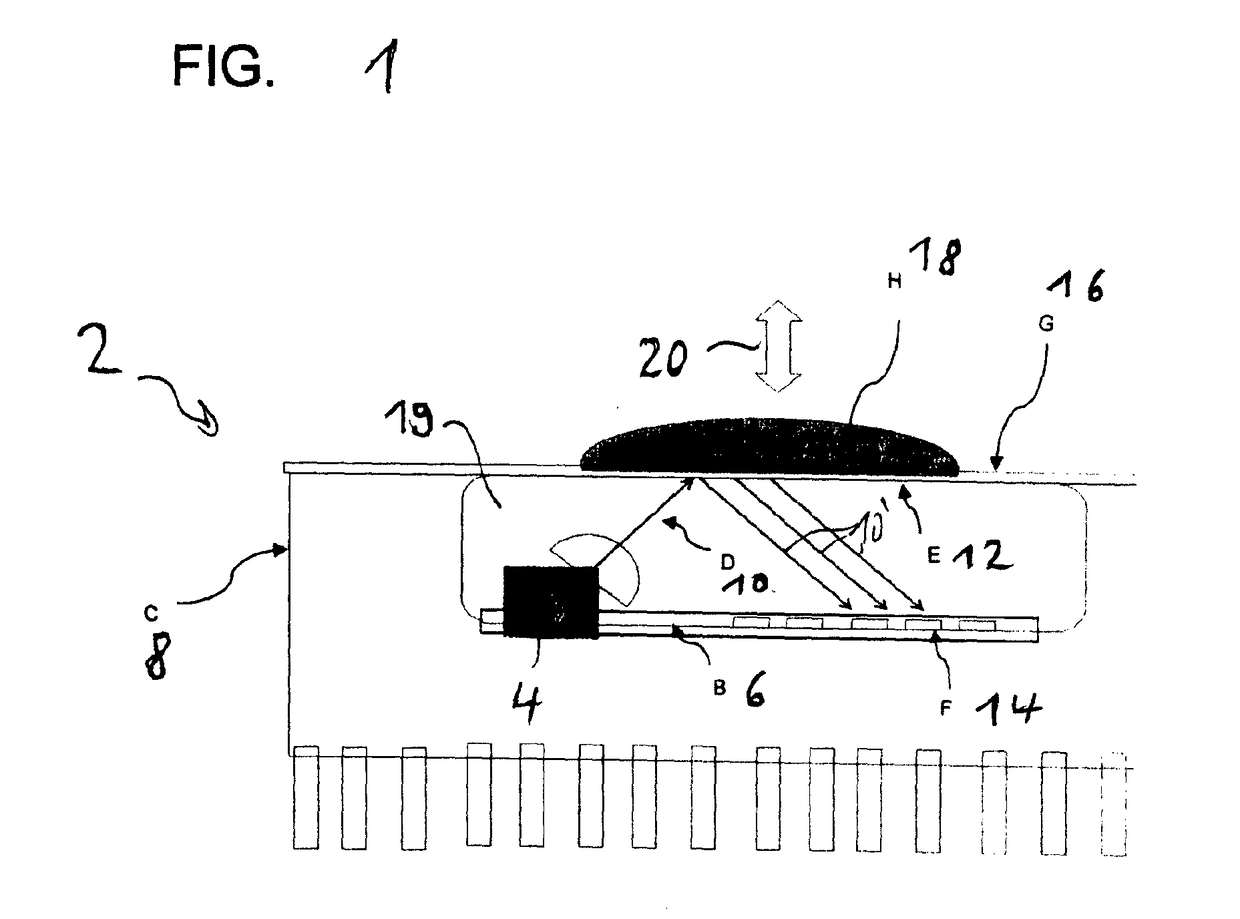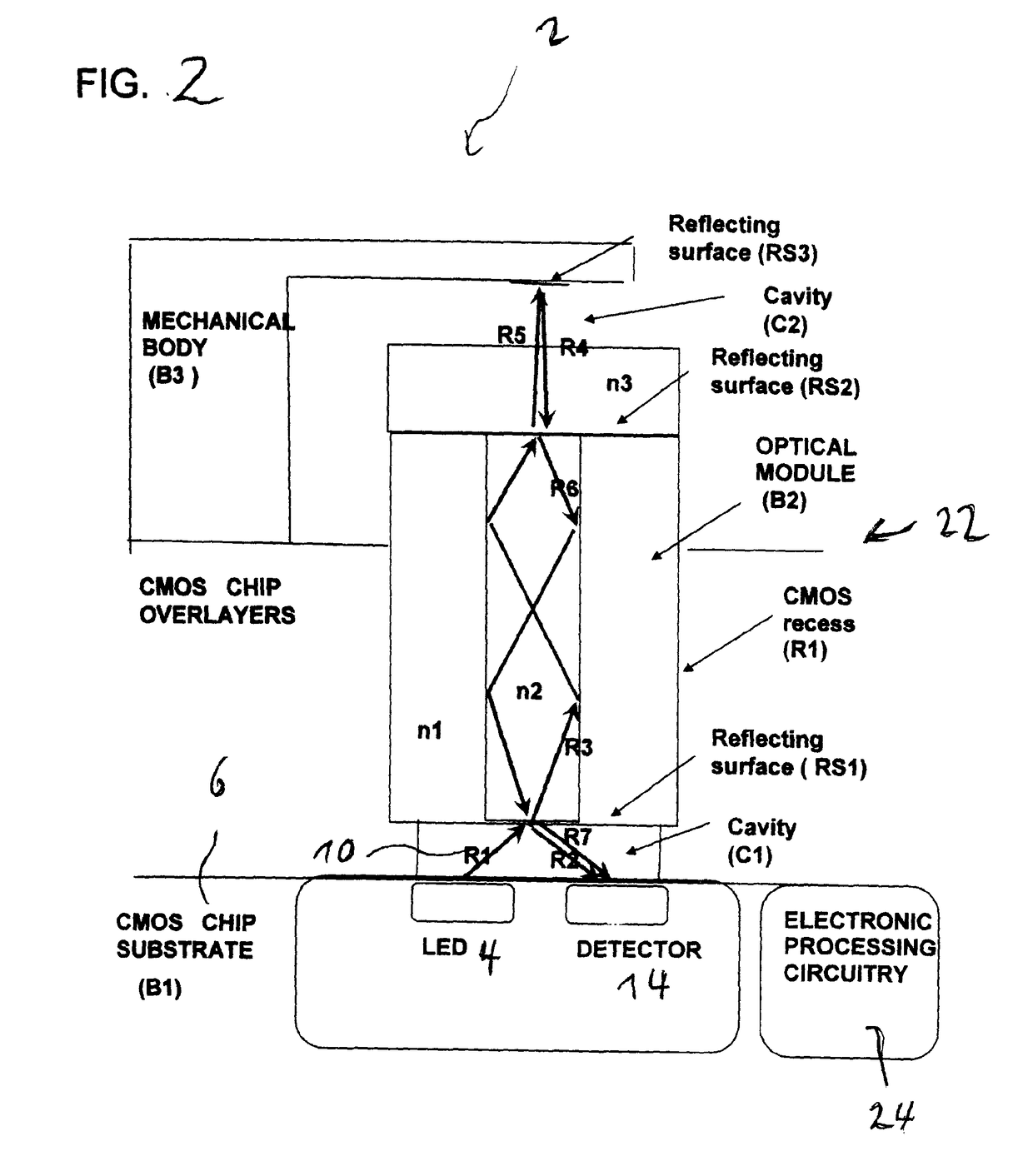CMOS based micro-photonic systems
a micro-photonic system and micro-chip technology, applied in the field of micro-photonic systems based on micro-chips, can solve the problems of low photon emission efficiency of current silicon light emitting devices, high cost, and high cost of technology, and achieve the effect of high coupling and transfer efficiency
- Summary
- Abstract
- Description
- Claims
- Application Information
AI Technical Summary
Benefits of technology
Problems solved by technology
Method used
Image
Examples
second embodiment
[0082]a micro photonic system 2 is outlined in FIG. 2. Using CMOS Integrated circuit with the integrated optical source 4 and directional emitter and detector structures 14 as a platform and adding some kind of optical-mechanical structure 22 in package form with which using the optical emissions 10 interact. Particular in this approach is the addition of an optical module 22 that accumulates light vertically from the chip 6 and waveguide light vertically outwards from the chip surface, collimates the optical radiation where it can subsequently interacts with secondary mechanical body and reflecting surface. Light is reflected vertically backwards into the module again, and is then wave-guided back onto the chip 6 surface. By controlling the positioning of the emitters 4 and detectors 14 relative to the module 22, the optical path of the transmitting and reflective components can be separated and the reflected component can be distinctively detected. The device 2 hence creates a sho...
first embodiment
[0194]In the invention as shown in FIG. 41, a micro RF oscillating and transmitting circuit and electronic driving and processing circuitry is fabricated on a printed circuit board platform using surface mount technology. The RF transmitting pattern is designed that is extremely wide angle or even omni-directional. The frequency is chosen to be in one of the permissible MHz or GHz bands. The dimensions of the total circuitry may in this case be bigger but it is envisaged that it will still be within credit card dimension limits. The RF transmitting pattern is designed that is extremely wide angle or even omni-directional. The frequency is chosen to be in one of the permissible MHz or GHz bands. The 2-20 GHz bands are particularly attractive since very small oscillating circuitry can be directly fabricated at micron dimensions on CMOS chip using lateral inductor and reverse bias capacitance or avalanche-capacitance technology. The transmitting carrier is appropriately modulated with ...
third embodiment
[0195]In the invention as shown in FIG. 42, a micro RF oscillating and transmitting circuit is fabricated on a CMOS chip platform. The RF transmitting pattern is designed that is extremely wide angle or even omni-directional. The frequency is chosen to be in one of the permissible MHz or GHz bands. The 2-20 GHz bands are particularly attractive since very small oscillating circuitry can be directly fabricated at micron dimensions on CMOS chip using lateral inductor and reverse bias capacitance or avalanche-capacitance technology. The transmitting carrier is appropriately modulated with on board CMOS modulation circuitry. Appropriate coding techniques can be used to transmit programmable and instructional information from the user card to the Master unit. The Master unit receives the information, can be coupled to secondary control circuitry. This unit can hence perform certain secondary tasks such identification of the user card and person, perform customized set up functions of a m...
PUM
 Login to View More
Login to View More Abstract
Description
Claims
Application Information
 Login to View More
Login to View More - R&D
- Intellectual Property
- Life Sciences
- Materials
- Tech Scout
- Unparalleled Data Quality
- Higher Quality Content
- 60% Fewer Hallucinations
Browse by: Latest US Patents, China's latest patents, Technical Efficacy Thesaurus, Application Domain, Technology Topic, Popular Technical Reports.
© 2025 PatSnap. All rights reserved.Legal|Privacy policy|Modern Slavery Act Transparency Statement|Sitemap|About US| Contact US: help@patsnap.com



